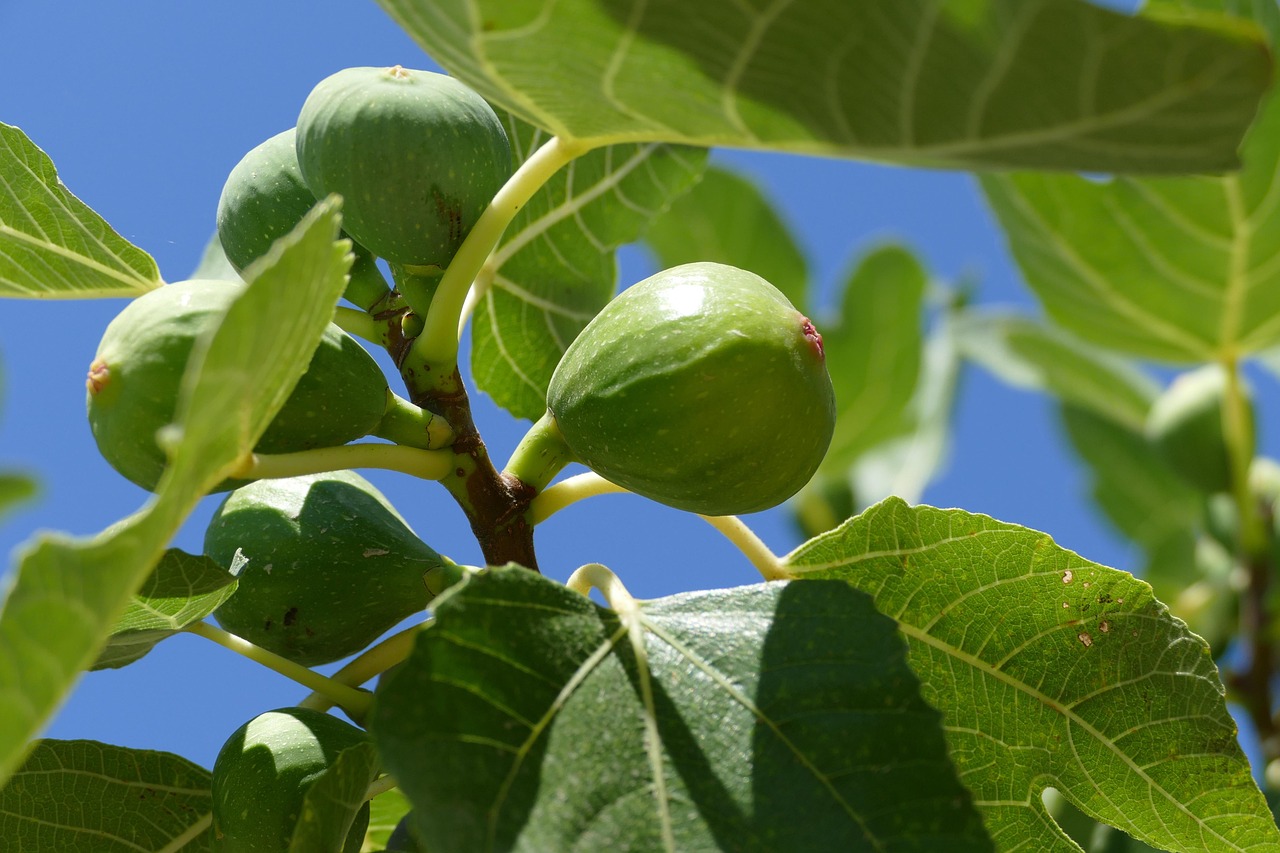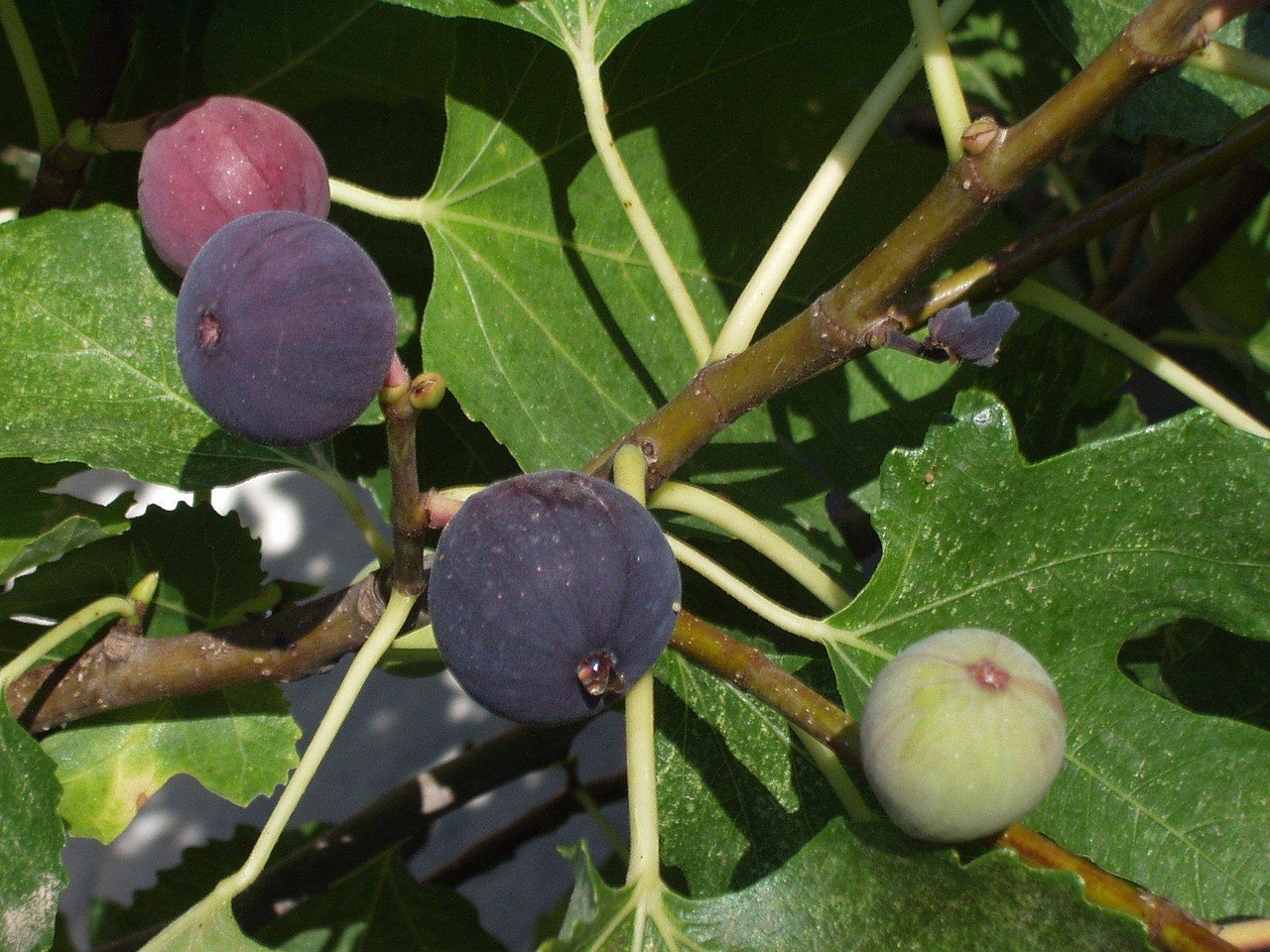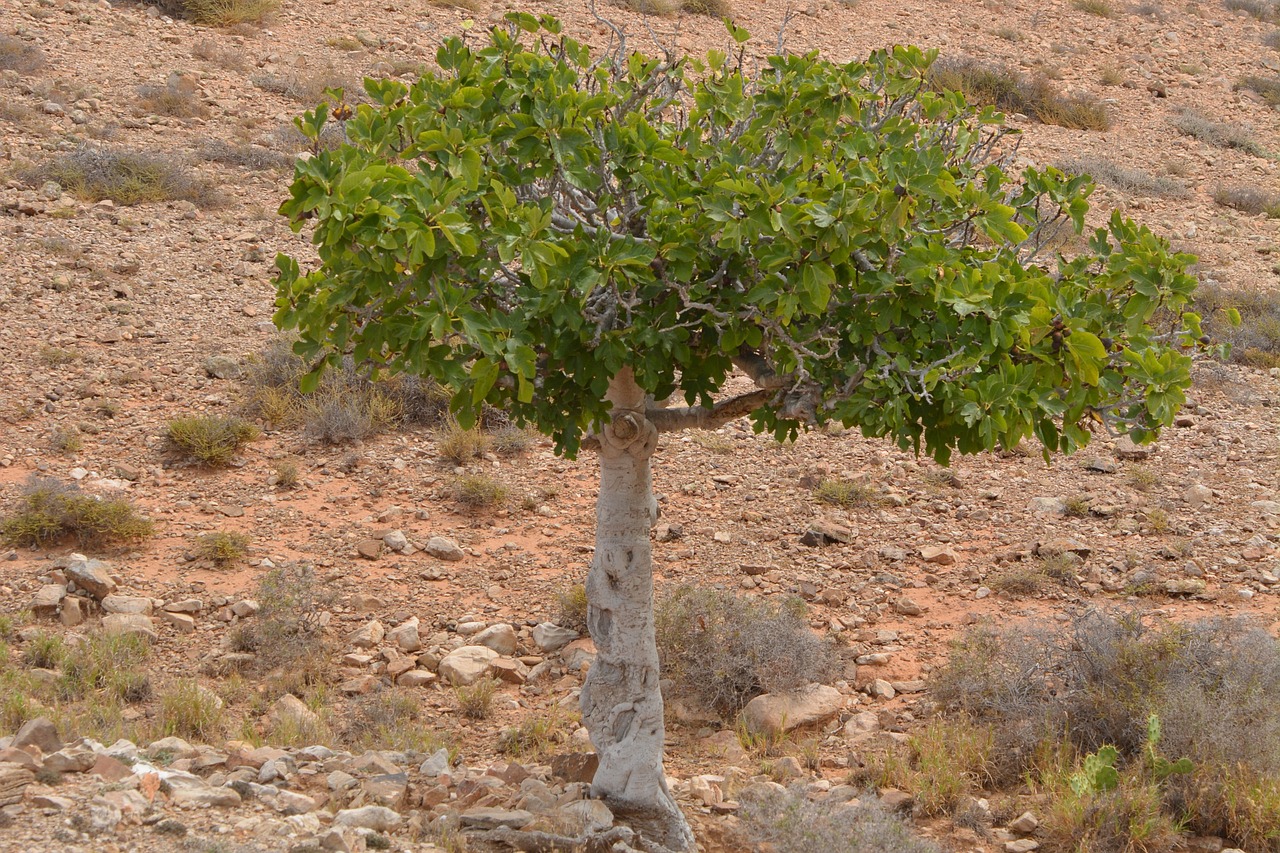Pruning fig trees properly enhances fruit production by improving air circulation, sunlight exposure, and overall tree health. Focus on removing dead or diseased branches, thinning overcrowded areas, and shaping the tree to promote a strong structure.
Fig trees are beloved for their sweet and nutritious fruits. They are relatively easy to grow and can thrive in various climates. However, to maximize yield, proper pruning is essential. Pruning helps maintain the health of the tree while encouraging better fruit production. Understanding the right techniques and timing can make all the difference in your fig harvest.

Pruning fig trees involves more than just cutting back branches. It requires knowledge about the tree’s growth patterns and understanding when to prune for optimal results. A well-pruned fig tree not only produces more fruit but also reduces the risk of disease and pest infestations. Fig trees typically bear fruit on new growth, so knowing how to manage this growth is crucial for successful pruning.
Understanding Fig Tree Growth
Before diving into pruning techniques, it is important to understand how fig trees grow. Fig trees can be classified as either common figs or Smyrna figs. Common figs produce fruit without pollination, while Smyrna figs require pollination from a specific type of wasp. Most home gardeners cultivate common figs because they are easier to manage.
Fig trees generally have a strong growth pattern. They can reach heights of up to 30 feet but can be kept smaller with regular pruning. Their branching structure typically develops in a way that can become crowded if not managed properly. Crowded branches can lead to poor air circulation and reduced sunlight exposure, both of which are detrimental to fruit production.

| Growth Type | Fruit Production | Pollination Requirement |
|---|---|---|
| Common Figs | Produces fruit on new wood | No pollination needed |
| Smyrna Figs | Requires pollination for fruit | Needs pollinating wasps |
To prune effectively, it is essential to recognize the different types of growth on the tree. Fig trees produce both vegetative growth and fruit-bearing growth. Vegetative growth consists of new branches and leaves, while fruit-bearing growth includes the actual figs. Understanding these distinctions will help you determine which branches to keep and which to remove.
Best Practices for Pruning Fig Trees
When it comes to pruning fig trees, timing is critical. The best time to prune is during the dormant season, typically in late winter or early spring before new growth begins. This timing helps minimize stress on the tree and allows it to recover quickly as it begins to produce new leaves and fruit.
Here are some best practices for pruning fig trees:

- Remove Dead or Diseased Wood: Start by cutting away any dead or diseased branches. This will help improve the overall health of the tree.
- Thin Out Crowded Branches: If branches are growing too close together, thin them out to improve air circulation and sunlight exposure.
- Shape the Tree: Aim for an open center structure that allows light to penetrate throughout the tree.
- Cut Back New Growth: Trim back new growth to encourage the development of stronger branches that can support heavy fruit loads.
- Avoid Heavy Pruning: Over-pruning can lead to excessive vegetative growth at the expense of fruit production.
When pruning, always use clean, sharp tools. This will help prevent the spread of disease and make cleaner cuts that heal faster. Consider using loppers or hand pruners for smaller branches, while larger branches may require a saw.
After pruning, monitor your fig tree closely for signs of stress or disease. Providing adequate water and nutrients will help support recovery and promote healthy growth throughout the growing season.
Understanding fig tree varieties and employing proper pruning techniques can set you on the path to a bountiful harvest. Keep in mind that each tree is unique, so be adaptable in your approach based on how your specific tree responds to pruning efforts.

Understanding the Timing of Pruning
Timing is crucial when it comes to pruning fig trees. The right timing can significantly influence the quality and quantity of fruit your tree produces. Pruning at different times of the year can yield different results, and being aware of these can help you optimize your efforts.
The best time to prune fig trees is in late winter or early spring, just before the new growth begins. This period allows the tree to heal quickly as it starts to produce new leaves and fruit. If you prune too late in the season, you may remove the new growth that would have borne fruit.
Seasonal Considerations
Each season presents unique challenges and opportunities for fig tree pruning:
- Winter: Pruning during the dormant season helps reduce stress on the tree. It is easier to identify dead or damaged branches when the tree is bare. Aim to finish pruning before the sap begins to flow in early spring.
- Spring: As new growth appears, it is important to assess how much pruning to do. Light pruning can be done in spring to shape the tree and remove any damaged branches. This timing ensures that you do not lose potential fruit.
- Summer: Summer pruning is generally not recommended for fig trees. However, if you need to manage excessive growth or remove suckers, it can be done cautiously. Be mindful that heavy summer pruning may affect fruit production.
- Fall: Avoid pruning in the fall as this can expose the tree to potential cold damage. Additionally, any cuts made in fall may not heal well before winter sets in.
Techniques for Effective Pruning
There are various pruning techniques that can be employed depending on the desired outcome. Understanding these techniques will allow you to choose the best approach for your fig tree’s needs.
Crown Thinning
Crown thinning involves selectively removing branches throughout the canopy of the tree. This technique increases airflow, reduces disease risk, and allows sunlight to penetrate deeper into the tree.
- Identify branches that cross or rub against each other.
- Selectively remove these branches to create an open canopy.
- Aim for a balanced appearance while ensuring that the overall shape remains intact.
Crown Raising
Crown raising focuses on removing lower branches to raise the height of the tree’s crown. This technique can be useful for improving access beneath the tree and reducing competition from other vegetation.
- Remove lower branches that are less productive.
- Aim to raise the crown gradually over several years rather than all at once.
Crown Reduction
Crown reduction involves shortening longer branches to control the size of the tree while maintaining its overall shape. This method is beneficial for fig trees that have outgrown their space.
- Select branches that are too long or are growing in undesirable directions.
- Cut back these branches to a lateral branch or bud to encourage new growth.
Common Mistakes to Avoid
Even with good intentions, mistakes can happen during pruning that may negatively impact your fig tree’s health and yield. Awareness of these common pitfalls can help you avoid them.
- Over-Pruning: Removing too much foliage can stress the tree and lead to reduced fruit production. Always prioritize healthy growth over aggressive cutting.
- Incorrect Timing: Pruning at the wrong time can remove potential fruit-bearing wood. Stick to late winter or early spring for best results.
- Poor Cutting Techniques: Using dull tools or making jagged cuts can invite disease into the tree. Always use clean and sharp tools for a smooth cut.
- Ineffective Tree Shape: Failing to maintain a balanced tree shape can lead to overcrowding and reduce overall yield. Keep an eye on how your tree develops over time.
The Role of Fertilization After Pruning
After pruning, proper fertilization plays an important role in recovery and growth. Fertilizing your fig tree supports new growth and fruit production. It ensures that the tree has enough nutrients available as it leafs out in spring.
A balanced fertilizer with equal parts nitrogen, phosphorus, and potassium is often recommended. Here are some tips for fertilizing:
- Apply fertilizer in early spring as new growth begins.
- Use organic options like compost or well-rotted manure to enrich soil health.
- Avoid over-fertilizing, as this can lead to excessive vegetative growth at the expense of fruit production.
By understanding when and how to prune, as well as avoiding common mistakes, you can enhance the health and productivity of your fig trees significantly. Each pruning season presents an opportunity to shape your tree toward better yields and improved fruit quality.
Pest and Disease Management in Fig Trees
Maintaining the health of your fig tree goes hand in hand with effective pruning practices. While pruning encourages better air circulation and light penetration, it is equally important to manage pests and diseases that can affect the tree’s yield. Understanding common threats and how to combat them will help you keep your fig tree healthy and productive.
Common Pests Affecting Fig Trees
Fig trees can be susceptible to various pests. Here are some of the most common pests you may encounter:
- Fig Beetle: This pest can cause damage to the fruit. They are attracted to overripe figs and can be controlled by removing fallen fruit and applying insecticidal soap.
- Spider Mites: These tiny pests thrive in hot, dry conditions. Symptoms include yellowing leaves and webbing. Regularly misting the tree and applying miticides can help control their population.
- Scale Insects: Scale insects appear as small bumps on branches and leaves. They feed on sap and can weaken the tree. Use horticultural oil or insecticidal soap for treatment.
- Leafhoppers: These pests can cause leaf damage and transmit diseases. Control them by encouraging natural predators, such as ladybugs, or using insecticidal sprays if necessary.
Disease Threats to Fig Trees
Fig trees can also face various diseases that may compromise their health. Some of the most prevalent diseases include:
- Root Rot: Caused by overwatering or poor drainage, root rot leads to wilting and yellowing leaves. Improve drainage and allow soil to dry between waterings to prevent this problem.
- Fig Rust: This fungal disease manifests as orange spots on the leaves. To manage fig rust, ensure good air circulation and consider applying fungicides as a preventive measure.
- Fusarium Wilt: This soil-borne fungus can cause wilting and dieback. There is no cure, so prevention through proper watering and soil management is essential.
- Powdery Mildew: A common fungal issue, powdery mildew appears as a white coating on leaves. To combat this, improve air circulation around the tree and use fungicides when necessary.
Watering Practices for Healthy Fig Trees
Proper watering is crucial for the health of fig trees, especially after pruning. Adequate moisture supports recovery, new growth, and fruit development. However, both overwatering and underwatering can lead to problems.
Watering Guidelines
Here are some best practices for watering fig trees:
- Deep Watering: Water deeply but infrequently to encourage deep root growth. This method helps the tree develop resilience against drought.
- Check Soil Moisture: Use your finger to check soil moisture about two inches below the surface. If it feels dry, it’s time to water.
- Adjust for Seasons: During the growing season, fig trees may need more frequent watering. As temperatures rise, monitor moisture levels closely.
- Avoid Waterlogged Conditions: Ensure proper drainage to prevent root rot. If your tree is in heavy clay soil, consider raised beds or mounds to improve drainage.
Signs of Water Stress
Be observant of your fig tree’s health, as signs of water stress can indicate a need for adjustment in your watering practices:
- Wilting Leaves: This can indicate insufficient water supply.
- Yellowing Leaves: Overwatering can lead to yellow leaves due to root issues.
- Curling Leaves: Leaves curling inward may signify too much or too little water.
The Importance of Mulching
Mulching is a beneficial practice for fig trees that helps retain moisture, suppress weeds, and regulate soil temperature. By applying mulch around your fig trees, you can create a healthier growing environment.
Choosing the Right Mulch
Selecting an appropriate mulch material is essential. Here are some options:
- Bark Mulch: This organic option breaks down slowly, providing long-term benefits while conserving moisture.
- Straw or Hay: These materials are lightweight and effective at retaining moisture while suppressing weeds.
- Wood Chips: Wood chips provide good insulation and moisture retention but should be applied carefully to prevent excess nitrogen depletion in the soil.
Applying Mulch Effectively
To ensure the best results when mulching your fig trees, follow these guidelines:
- Depth: Apply mulch in a layer that is 2-4 inches deep around the base of the tree, avoiding direct contact with the trunk.
- Avoid Compaction: Keep mulch loose to allow air and water penetration while preventing compaction that could harm roots.
- Renew Regularly: Organic mulches break down over time. Replace or replenish mulch as needed to maintain its effectiveness.
The combination of proper pest management, effective watering practices, and strategic mulching will support your fig tree’s health and productivity throughout its growing season. Keeping a close eye on these factors will help ensure that your efforts in pruning lead to a fruitful harvest.
Enhancing Fig Tree Yield Through Consistent Care
In addition to pruning, pest management, watering practices, and mulching, consistent care is vital for maintaining the health and productivity of fig trees. Regular monitoring and timely interventions can significantly contribute to the overall success of your fig tree cultivation.
Monitoring Growth and Health
Being attentive to your fig tree’s growth and health status is essential. Regularly checking for signs of stress, disease, or pest infestations can help you address issues before they escalate. Here are some key aspects to monitor:
- Leaf Color: Healthy leaves should be deep green. Yellowing may indicate nutrient deficiencies or overwatering.
- Fruit Development: Monitor fruit size and color. Abnormalities can signal pest damage or disease.
- Branch Structure: Look for weak or broken branches that may need support or removal.
- Root Health: If possible, examine the root system for signs of rot or damage, especially after heavy rains.
Seasonal Maintenance Routines
Establishing a seasonal maintenance routine can help keep your fig trees thriving throughout the year. Here are recommended tasks for each season:
- Spring:
- Conduct final pruning before new growth begins.
- Apply a balanced fertilizer as new growth starts.
- Begin regular watering as temperatures rise.
- Summer:
- Monitor for pests and diseases frequently.
- Water deeply during dry spells.
- Check mulch levels and replenish as necessary.
- Fall:
- Harvest mature figs and remove any fallen fruit.
- Inspect the tree for signs of disease or pests.
- Prepare for winter by applying a layer of mulch to protect roots from frost.
- Winter:
- Prune dormant wood to shape the tree.
- Ensure adequate protection against extreme cold.
- Plan for the upcoming growing season based on observed growth patterns from the previous year.
Final Thoughts
Successfully pruning fig trees requires a combination of knowledge, skill, and consistent care. By understanding the fundamentals of fig tree growth, implementing effective pruning techniques, and maintaining a routine of seasonal care, you can enhance both the health and yield of your trees.
This article has highlighted several key practices that contribute to increased fig production, including:
- The importance of timing when pruning to maximize fruit yield.
- The role of proper pest and disease management in maintaining tree health.
- The significance of appropriate watering and mulching techniques to support growth.
- The need for regular monitoring and seasonal maintenance routines to ensure ongoing success.
By integrating these best practices into your fig tree care regimen, you will not only enjoy a fruitful harvest but also cultivate healthy trees that thrive for years to come. Remember that each fig tree is unique, so be adaptable in your approach and responsive to your tree’s specific needs. Happy gardening!
